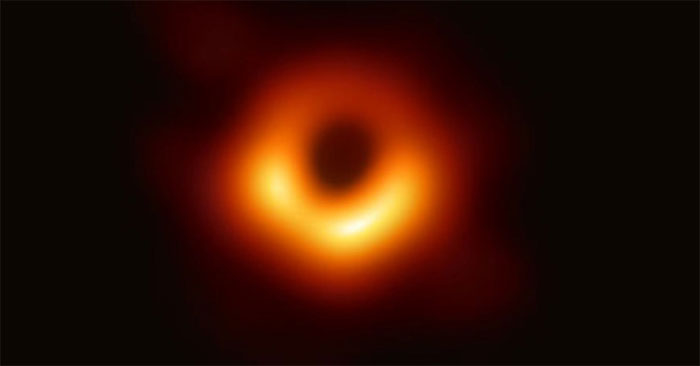Researchers are about to film a supermassive black hole
Astronomers will use a virtual telescope larger than Earth to record a supermassive black hole in the center of the Milky Way in real time.
The team from the Event Horizon Telescope (EHT) is planning to film a supermassive black hole in the center of the Milky Way galaxy. The new project, called the next generation EHT (ngEHT), aims to capture real-time video of Sagittarius A * black holes to observe behavior and how it changes its surroundings.

Black hole in the center of galaxy M87.(Photo: Science Alert).
"We can see black holes evolve in real time," said Shep Doeleman, an astronomer who leads the EHT team globally. "Then we can understand how it shoots out high energies from its north and south poles. We can see how it evolved with the galaxy. We can even save experience." Einstein's theory of relativity in a completely different way by observing the orbits of matter around black holes instead of light. "
Earlier, EHT released a groundbreaking photo of a supermassive black hole in the center of the galaxy Messier 87 (M87) in April. In the photo, the red and yellow circle is an accretion disk of super-hot gas and rotating dust. circular originating round stars, planets and other objects. The accretion disk of M87 is larger than the entire solar system. The black region inside the disk is the event horizon, where the gravity of the black hole is so strong that even light cannot escape. Without the light, taking photos or filming a black hole becomes extremely difficult.
The ngEHT research team decided to direct the global radio glass network to M87 and Sagittarius A * . The Event Horizon Telescope Network includes 8 telescopes around the world. Together, they create a large virtual telescope the size of Earth. The researchers are planning to expand the network to 11 telescopes by 2020, while upgrading sophisticated technology to process 10 times more data, according to Doeleman.
Doeleman's team hopes to be able to film two black holes in about five years. The videos can reveal how black holes digest matter. They also proposed building a new receiver disk to put into the network. They don't need new disks to record black holes, but expanding the network will help improve video quality. The ngEHT team also mobilized many space telescopes, helping to assemble telescopes larger than the Earth.
M87 is as massive as 6.5 billion Suns. Sagittarius A * black hole is smaller, only about 4 million Suns. That means Sagittarius A * absorbs less matter and has a smaller accretion disk than M87, which drags matter around it faster, completing orbit in hours instead of weeks like M87.
Researchers want to record Sagittarius A * in real time because it changes rapidly and can see clearly what is moving around . "Sagittarius A * is very active. On one night of observation, you can see 8 - 9 spins of matter around the black hole , " Doeleman said.
- The supermassive black hole closest to Earth glows intensely
- Super-large black hole rotates rapidly near the speed of light
- Video: Compare the size of black holes in the universe
- Detecting the supermassive black hole is spraying material
- The three galaxies unite to
- 10 fascinating facts about black holes
- Super black holes bombard the Earth with powerful cosmic rays
- Monster black hole 'belching' twice after swallowing gas
- The first time I took a picture of a black hole three million times bigger than Earth
- Detecting a black hole
- The supermassive black hole rotates at the speed of light
- The supermassive black hole in the center of the Milky Way is 'hungry' like never before
 Van Allen's belt and evidence that the Apollo 11 mission to the Moon was myth
Van Allen's belt and evidence that the Apollo 11 mission to the Moon was myth The levels of civilization in the universe (Kardashev scale)
The levels of civilization in the universe (Kardashev scale) Today Mars, the sun and the Earth are aligned
Today Mars, the sun and the Earth are aligned The Amazon owner announced a secret plan to build a space base for thousands of people
The Amazon owner announced a secret plan to build a space base for thousands of people